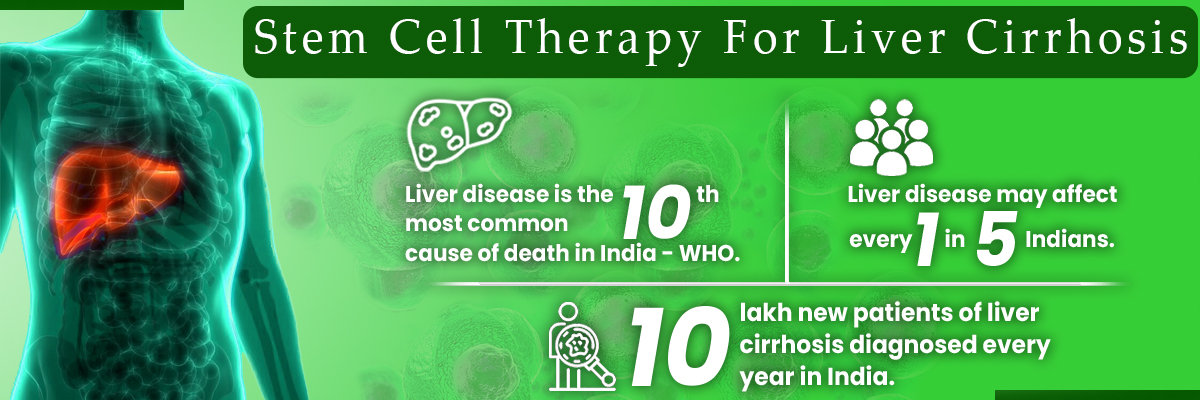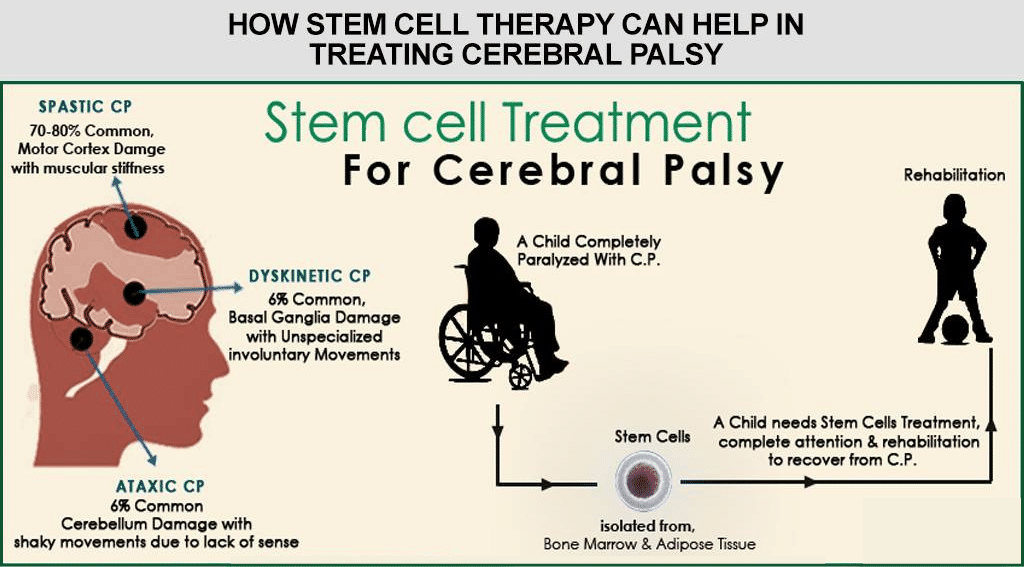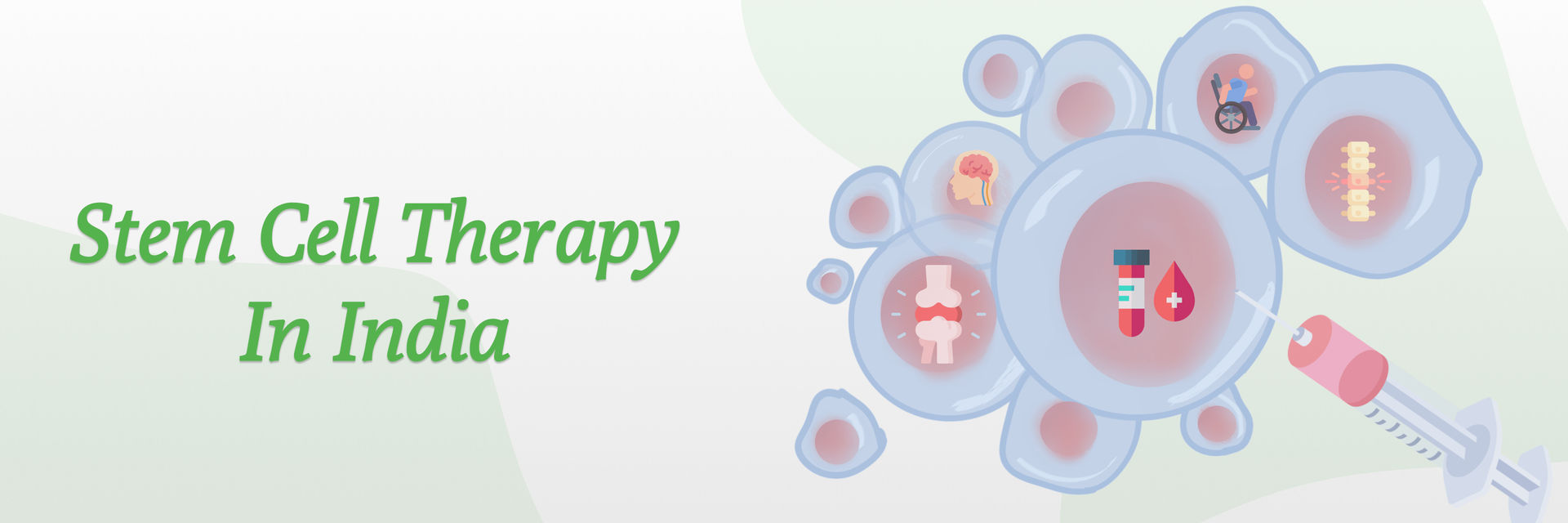Overview
Stem cell transplant has emerged as a pivotal treatment for Multiple Myeloma, a type of blood cancer that occurs in plasma cells, which is a kind of white blood cell. In multiple myeloma, the cancerous plasma cells accumulate in the bone marrow, pushing out the normal blood cells. This approach, involving the replacement of diseased bone marrow with healthy stem cells, offers many patients a new lease on life.
This blog explores how Stem Cell Transplant for Multiple Myeloma transforms patient care, providing hope and improved outcomes. Join us as we delve into this innovative treatment, understanding its impact and the journey towards recovery.
So, what are stem cells?
Stem cells are undifferentiated cells in our bodies that can transform into any tissue. Over the past decade, stem cell transplantation has proven to be an effective treatment option for multiple myeloma.
Stem cell for multiple myeloma is FDA approved! Isn't that amazing?

Before we dive into the details of this treatment, we have answered some frequent questions that are sure to pop up in your mind.
Delve into the world of Stem Cell Transplants for Multiple Myeloma. Your health is too important to ignore – schedule your appointment now for personalized insights and proactive care.
Who is eligible for a stem cell transplant for Multiple Myeloma?
Undergoing a stem cell transplant can be quite demanding for your body. In general, younger candidates are preferred for this treatment. For more clarity, the following yardstick is followed:
| Age | Eligibility |
| Younger than 65 years | They are usually considered good candidates. |
| Between 65 and 75 years | Eligibility will depend on other factors like medical history and the extent of cancer. |
| Above 75 years | They are generally not considered good candidates for this procedure. |
Other factors considered are your medical history, cancer stage, and any treatments you might have already received.
Pros and cons of stem cell transplant for Multiple Myeloma
Like every medical procedure, this one also has certain pros and cons. However, these are only general indications. Your doctor will elaborate further while explaining the procedure.
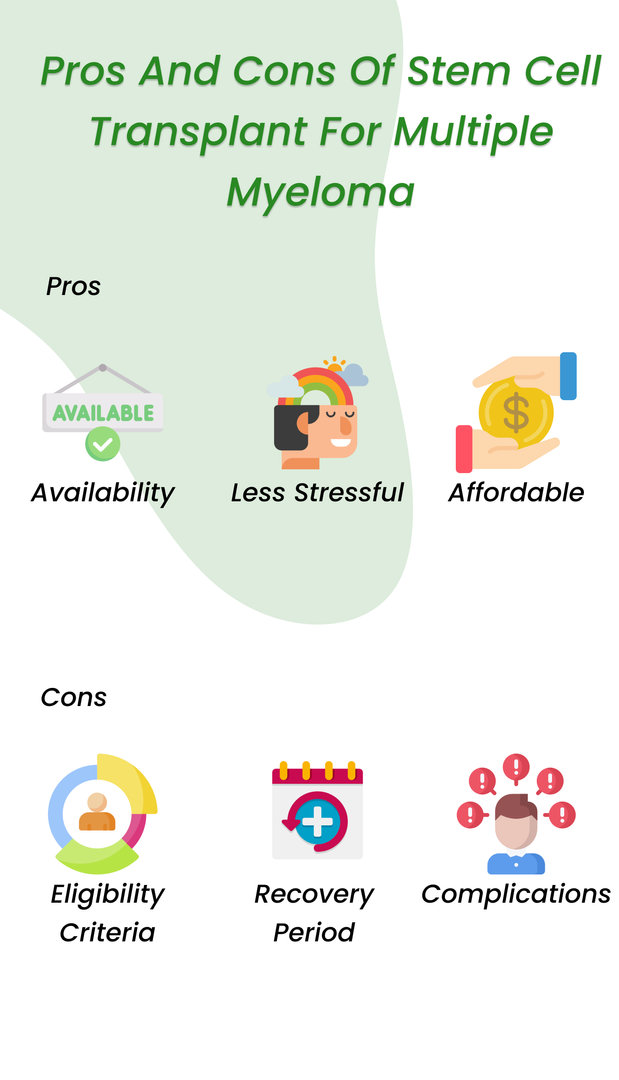
Explore the Pros and Cons of Stem Cell Transplant for Multiple Myeloma. Take charge of your health and life – contact us today for personalized insights and guidance on your journey.
| Pros | Cons |
| Stem cells are easily available | Not everyone is eligible for this treatment. |
| Symptoms are shown to be resolved more effectively | The recovery period might be several months long |
| In case of a relapse, the procedure can be repeated | Complications like graft-versus-host disease might arise in analogous transplants |
| Less stressful for the body | |
| In comparison to some other treatments, it is more affordable |
Cost of Stem Cell Transplant for Multiple Myeloma
Now that we have resolved several doubts, let’s answer one of the biggest questions about any treatment. Just how expensive is it?
The first thing we need to look at is the various factors that affect the cost of this treatment. Some of them are:
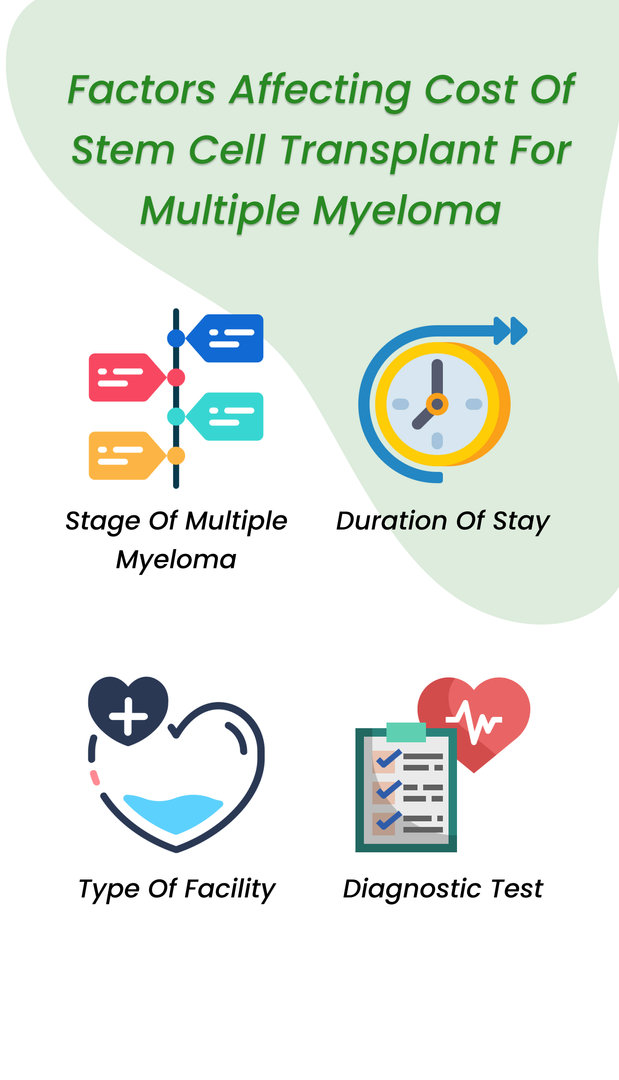
The estimated cost of a multiple myeloma bone marrow transplant in India is 11,000 to 13,000 USD or 8.25 to 9.75 lakhs INR.
The same treatment costs about 36,000 to 88,000 USD in the US. This is mainly because of India’s dedication to providing affordable healthcare to everyone.
Now let's read,
Types of Transplants and Procedures

Stem cells for a transplant procedure are usually derived from the bone marrow. Some newer studies have started extracting stem cells from the bloodstream instead. Your physician will determine which option might be the most suitable for you.
Discover the various Types of Transplants and Procedures. Take the first step to recovery – get in touch with us for personalized treatment information and support.
Autologous Stem Cell Transplant for Multiple Myeloma
The stem cells are extracted from the patient in this type of transplant. About half the stem cell transplant patients undergo this procedure, a standard treatment protocol.
One advantage of this type of transplant is that complications can be kept to a minimum. Since the stem cells come from the patient, the risk of rejection is eliminated. It also makes the stem cells more easily available, as cross-matching is unnecessary.
Procedure
How does the procedure work?
- The stem cells are extracted from the bone marrow (usually of the hip bone) or the bloodstream. The patient is first given growth factors to increase the number of available stem cells.
- The extracted stem cells are then prepared in the laboratory and frozen until ready for use. Enough stem cells for two transplants are usually stored.
- The next step is called conditioning. In this step, all the cells in the bone marrow, including the cancer cells, are killed. This is usually done with chemotherapy or radiotherapy.
- The last step is transplantation, which occurs one or two days after conditioning is completed. The stem cells are transplanted via IV infusion, which only takes two hours.
Analogous Stem Cell Transplant for Multiple Myeloma
An analogous stem cell transplant is one where donor stem cells are used. The donor is usually a close family member, most commonly a sibling. This is preferred when the multiple myeloma is more advanced, leaving fewer viable stem cells for extraction.
Cross-matching with the donor and extended monitoring after the procedure is required.
The steps of the procedure are the same as in an autologous stem cell transplant. The only difference is that the growth factors are given to the donor.
The biggest complication of this procedure is graft-versus-host disease. It can occur immediately or many months later.
After Stem Cell Transplant Multiple Myeloma—What to Expect?
After a stem cell transplant, you will notice significant improvements in your quality of life. You can now look forward to:

But what about the recovery time?
On average, multiple myeloma stem cell transplant recovery time is two to six weeks. During this time, your blood count will return to normal.
You can go home after two weeks when your blood count is high enough to fight off infections and prevent bleeding. Alternatively, your doctor might allow you to go home just a few days after the procedure but ask you to visit the transplant centre daily for monitoring.
Sometimes, a complete recovery takes up to six months, when you will be closely observed.
Stem Cell Transplant Side Effects for Multiple Myeloma
You will be glad to hear that a stem cell transplant usually has no notable side effects. However, you will notice severe side effects from chemotherapy or radiotherapy, which is required before undergoing the transplant. Some of them are:

- Nausea and dizziness
- Frequent infections
- Severe hair fall
- Oral symptoms like mouth sores
- Loss of appetite
Multiple Myeloma Stem Cell Transplant Complications
Very few complications arise from this procedure. However, it is very important to keep an eye out for these two issues:
- Graft-versus-host disease: This is solely seen in analogous transplants. It occurs when the patient’s body rejects the donor cells. It can sometimes happen months after the initial procedure. It is a serious, but treatable complication.
- Relapse: Although this is not a complication of the stem cell transplant by itself, a quick relapse might be a cause for concern. In this case, your physician will advise you to undergo another transplant procedure six to twelve months after the first one.
Concerned about complications in Multiple Myeloma Stem Cell Transplants? Your well-being is our priority – call us today to book your appointment and receive personalized care for a smoother journey.
Multiple Myeloma Survival Rate after Stem Cell Transplant
Stem cell transplant for multiple myeloma life expectancy is calculated by the five-year survival rate. In general, about 65 to 70% of patients live five years in remission after getting a stem cell transplant.
However, some studies have reported a much lower rate of survival. This is because the studies were conducted on patients with advanced cases of multiple myeloma.
Stem Cell Transplant Multiple Myeloma Success Rate
Let us ask the crucial question here—how effective is it?

If you look at the statistics of various studies, autologous transplants have been very successful. A success rate of 70 to 90% has been reported.
Analogous transplants are not far behind, with a 65 to 80% success rate.
Can Multiple Myeloma Relapse after Stem Cell Transplant?
The risk of relapse after treatment for multiple myeloma is very real. It can occur within a year or sometimes after many years. This is because multiple myeloma, while treatable, is incurable.
One study showed an early relapse in 16% of patients. In such cases, stem cell treatment for multiple myeloma can also be repeated.
It should be noted that multiple myeloma is a cancer with a high rate of relapse in general. Initial studies show that stem cell transplants significantly lengthen the period of remission compared to conventional chemotherapy.
Multiple Myeloma Stem Cell Transplant Stories
We are sure all this technical information has your head swimming right now.
Want to know how it worked out in the real world?
Let’s read what two cancer survivors, Johnny Veselka and Dilip Kumar, have to say about this procedure.
Johnny Veselka is a resident of the US. After being diagnosed with the dreaded multiple myeloma, he underwent a three-month intensive course of chemotherapy. He reacted reasonably well to this treatment and decided to undergo a stem cell transplant to cement his recovery further. He returned to his daily activities two weeks after discharge, albeit at a muted pace.
His advice? “Get the transplant early into the treatment,” he says.
Dilip Kumar, 48, was on vacation in New Zealand when he became wheelchair-ridden out of the blue. He was diagnosed with stage C of multiple myeloma on returning to India. After undergoing chemotherapy, he got a stem cell transplant in Mumbai. Six years later, he is blessedly still in remission.
So, what do you think about stem cell transplant for multiple myeloma, isn't it quite effective?

